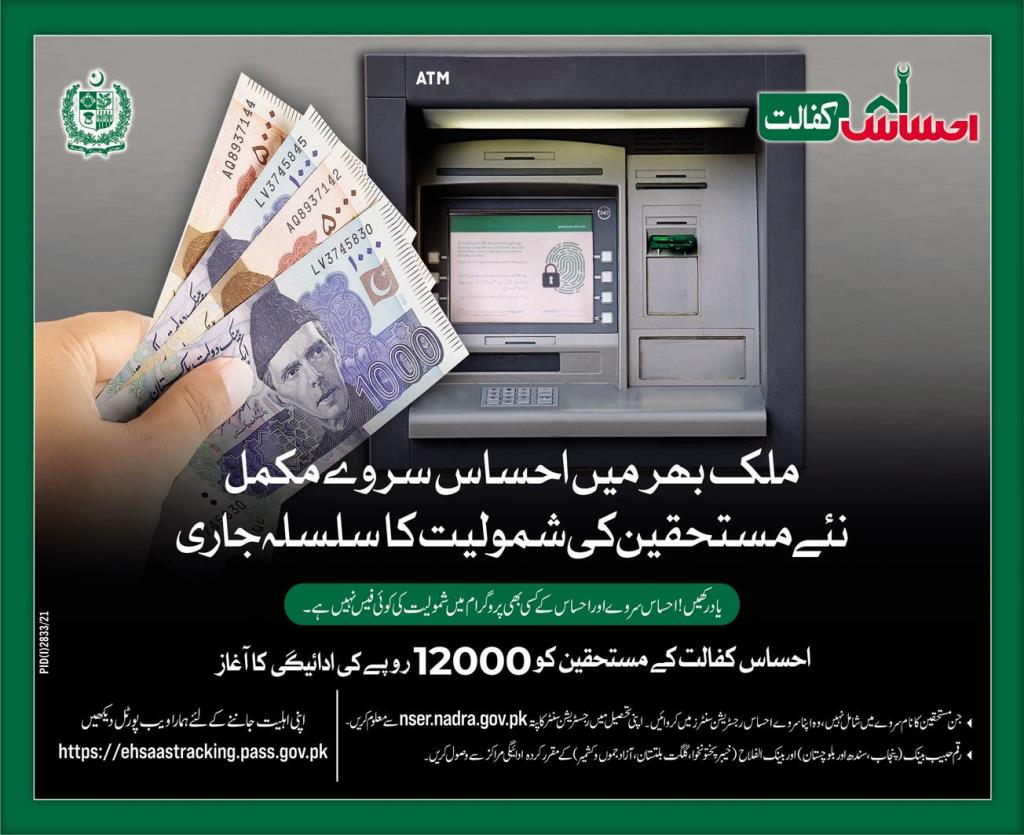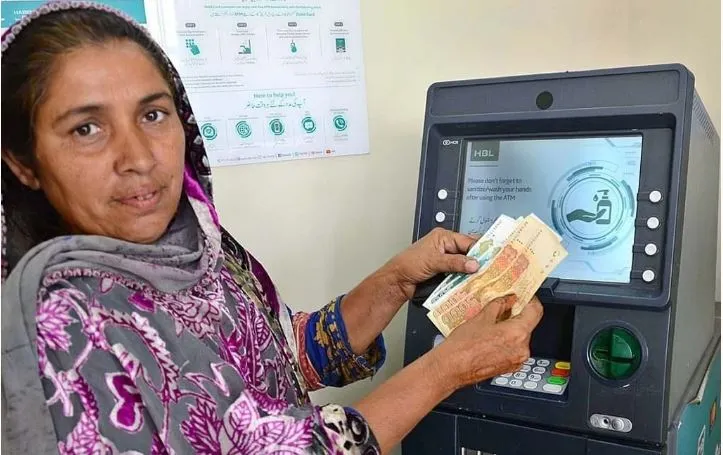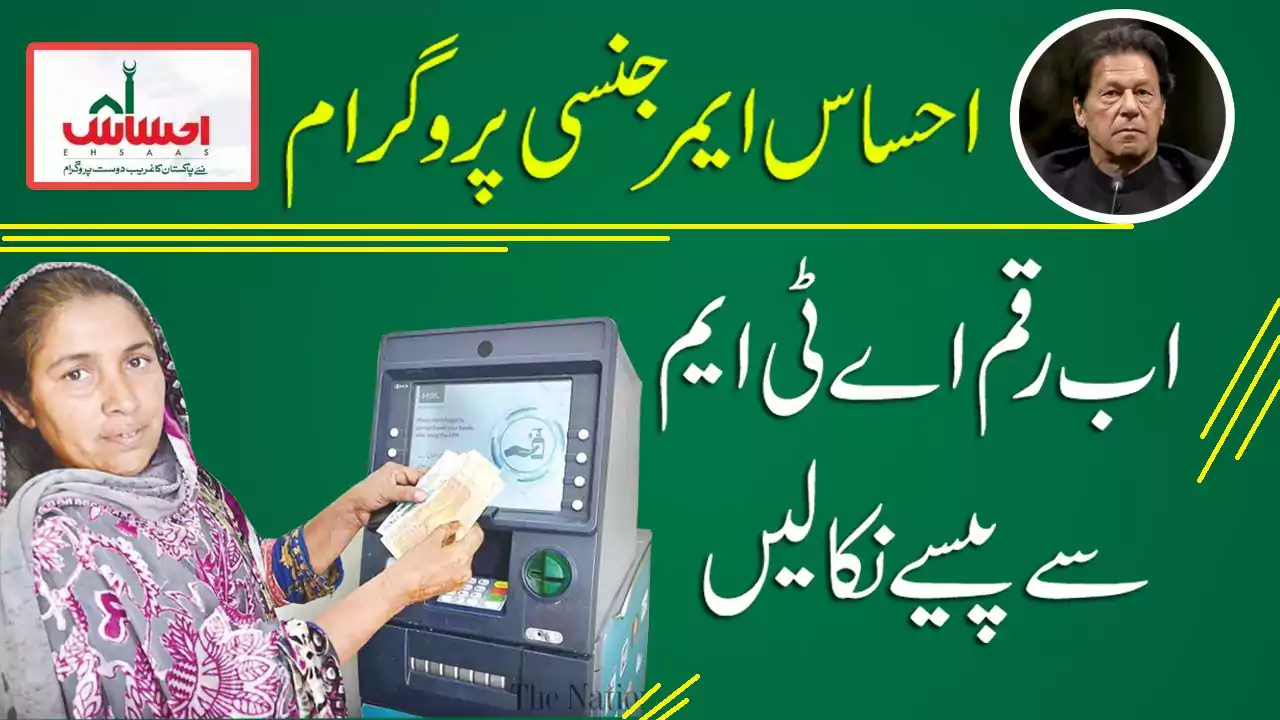How to Withdraw Ehsaas Emergency Cash With ATM in Pakistan
The Ehsaas Emergency Cash program is a government initiative that provides emergency cash to people in need. The goal is to give 47-56 percent of Pakistan’s population access to emergency funds.
While women make up 25 percent of recipients, gender gaps prevent women from gaining access to 75 percent of the funds.
Bank Alfalah provides cash withdrawal facility
A large number of families across Pakistan have been able to access the Ehsaas Emergency Cash Program. The government has set up several outlets where eligible families can withdraw their cash grants.
Bank Alfalah is one such institution that has provided this facility to eligible applicants. In addition to providing this service, the company also provides a web portal that allows eligible families to track their funds.

To access this service, customers must provide their 13-digit National Identity Card number. If the number is not listed, customers will be unable to access their account. To use the Ehsaas Kafalat cash withdrawal facility,
users must first enroll in the program. They will be enrolled based on the information they provided during their last Ehsaas application. If you are enrolled in the program, you will receive an SMS confirming that you are eligible to receive the cash.
Once the confirmation is received, you can use your phone to withdraw the money from an ATM. Make sure that you input your 13-digit National Identity Card number into the appropriate field and click on the “submit” button.
The cash withdrawal facility for the Ehsaas Emergency Cash Program is available at biometric ATMs set up at Ehsaas Payment Centers throughout the country. However, to access this service, participants must pay Rs. 14000/ to obtain their funds. The funds can also be received through Bank Alfalah’s biometric ATMs.
Gender gaps prevent equal access to 75 percent of funds
The Pakistani government can take steps to ensure that women are better served by the emergency cash program. Among other things, the program should prioritize women’s enrollment and applications for the emergency cash scheme. Currently, only 25 percent of recipients are women.
This means that 78 percent of women who would qualify for the emergency cash program will not receive any funds from it. This means that economic gender equality in Pakistan may regress. Hence, the government should take necessary measures to ensure that women are more easily enrolled in the scheme and that they have access to it through an ATM.
The FII survey for Pakistan’s banking sector has revealed that financial inclusion for women is still lagging behind that for men. The proportion of women who own a bank account is only 6.2 percent, while the percentage of men owning a bank account is 15.2 percent. In other words, women are a minority in the banking sector, and men dominate the workforce.
Despite the widespread adoption of cash transfer schemes across the world, there are still significant gender gaps. These gaps persist because cash transfers are not implemented in contexts where men and women are equally vulnerable. Rather, it is more effective to target vulnerable populations and provide cash amounts based on their vulnerabilities.
Gender gaps in financial inclusion are another problem. In Pakistan, only 7% of the population has a formal account. Women are less likely to access these services, and their lack of access to these services is exacerbated by gender norms. Women are also often restricted from working outside the home and access to technological innovations.
The FII 2015 report reveals a huge gender gap in financial inclusion, specifically when it comes to access to a full-service account. Compared with men, women are only one-quarter as likely to have a digital financial service.
Furthermore, women are less likely than men to have a mobile phone. Despite these disparities, the IFC recognizes that investing in financial inclusion in Pakistan makes good business sense.
The Ehsaas Emergency Cash programme was designed to serve 47-56 percent of the Pakistani population. However, gender barriers prevent equal access to the program. Despite the fact that these funds are distributed through biometrically enabled cashpoints,

the lack of access to ATMs has hindered the success of the programme. The programme will have to be extended to cover more people and improve the coverage rate before it becomes effective.
The Kafaalat program will replace the BISP in February 2020. This program will use a digital survey to identify eligible women. It also makes the process more efficient by automatically setting up bank accounts for women who would benefit from the program.
By targeting women for emergency cash transfers, the government can help promote economic empowerment and gender equality in Pakistan.
